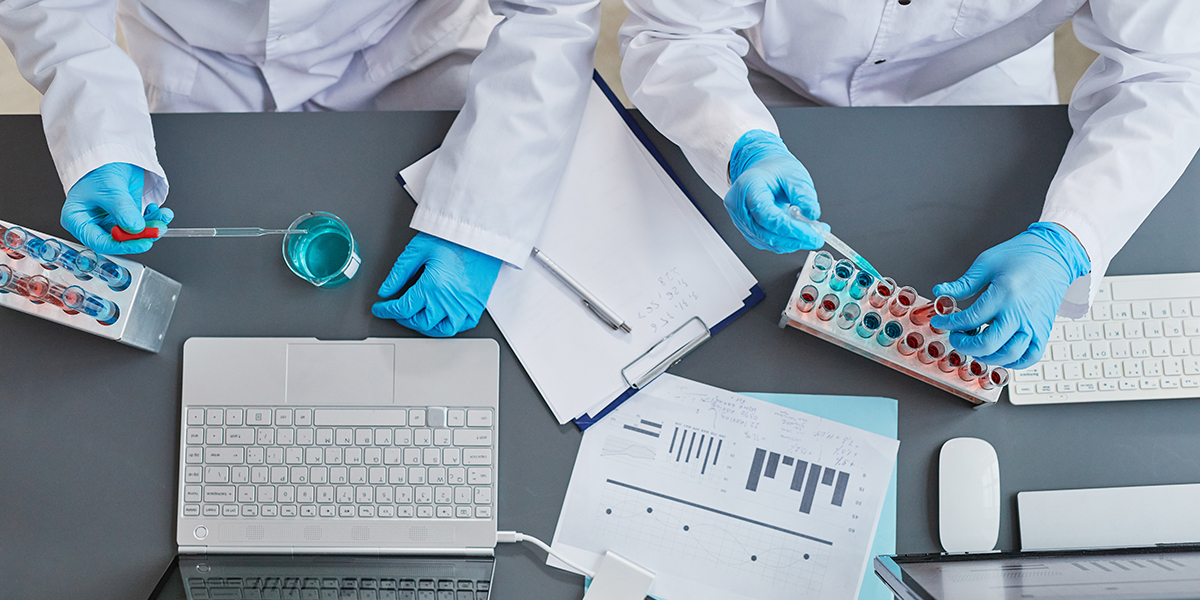Laboratories across the globe are experiencing a shift in how they operate. What once required painstaking manual tasks, like manually entering data into spreadsheets, can now be streamlined with automated processes. This transition isn’t just about making lab work more efficient—it’s about achieving outcomes that were once unattainable or impractical. Lab automation is becoming a tool in various research fields as labs face growing demands for faster, more precise results.
What is Lab Automation?
Lab automation refers to the use of technology, including specialized software and systems, to perform routine laboratory tasks. The big advantage? It speeds up processes and delivers more consistent results.
Key Benefits of Lab Automation
It’s not just about making things easier—this technology is transforming the way labs work, unlocking new levels of efficiency and precision. Let’s look at the benefits in more detail:

Increased Efficiency and Throughput
Automation accelerates repetitive tasks, significantly increasing throughput. For example, in environmental labs, high-throughput testing enables faster analysis of water or soil samples. Automated systems process large volumes of samples with high precision, which enhances both the speed of research, and the volume of data collected. This capability provides quicker insights, especially in time-sensitive projects.

Reduced Human Error
Manual tasks, especially repetitive ones, are prone to human error, leading to inconsistencies or mistakes. Automation performs tasks with remarkable precision, greatly minimizing variability. This results in more dependable data, which is crucial in research where accuracy is essential.

Cost Savings
While the initial investment in automation systems may be high, the long-term savings are substantial. These systems reduce labor costs, cut down on sample waste, and speed up the time it takes to generate results. Over time, the return on investment becomes evident, especially in high-volume labs or those working under tight deadlines.

Data Integrity and Management
Automation systems generate vast amounts of data that need to be recorded and stored accurately. The integrated software that accompanies these systems ensures real-time data recording, secure storage, and easy retrieval. This reduces the risk of errors associated with manual data entry, guaranteeing the integrity and accessibility of data for future analysis.
The Role of LIMS in Lab Automation
A Laboratory Information Management System (LIMS) is at the heart of most automated labs. It serves as the central hub for all data management, sample tracking, and workflow support. A well-integrated LIMS allows for smooth data flow between automated systems, tracking every sample’s process from collection to analysis. Let’s take a look at the key advantages:
Improved Data Accessibility and Integrity
LIMS organizes and stores data in real-time, making it easy for researchers to access and analyze the information. Industries such as environmental testing rely heavily on data integrity to maintain compliance and support sound decision-making processes.
Sample Tracking and Management
Managing thousands of samples manually can be overwhelming. LIMS tracks the lifecycle of each sample—from collection to analysis—ensuring they are not lost or mishandled. In tightly regulated fields like environmental testing, precise data tracking is a non-negotiable requirement for meeting industry standards.
Regulatory Compliance
LIMS supports compliance with industry standards like TNI/NELAP, ISO 17025, and overall good laboratory practices. By maintaining an audit trail of all laboratory activities, LIMS will make labs remain compliant with regulatory requirements, reducing the risk of costly penalties or regulatory setbacks.
Reporting and Analytics
LIMS consolidates all lab data into a central system, enabling the generation of comprehensive reports and providing powerful analytical tools. These insights help streamline operations, improve decision-making, and optimize workflows, which can boost overall lab efficiency.
Lab Equipment Calibration
LIMS also plays a crucial role in ensuring that lab equipment is properly calibrated, which is essential for accurate measurements and results. By integrating calibration schedules and tracking maintenance records, LIMS helps labs manage their equipment calibration proactively. Automated reminders and logs ensure that equipment stays within the required calibration standards, which minimizes errors and ensures compliance with industry regulations.
Schedule a Demo
The integration of lab automation with LIMS is driving a new era of lab research. Automation boosts the speed, precision, and efficiency of laboratory operations, allowing researchers to focus on higher-level tasks. With the added support of BTSOFT’s ALPACA LIMS, labs benefit from smooth data management, accurate sample tracking, and seamless regulatory compliance.
BTSOFT is a leader in Laboratory Information Management Systems (LIMS), dedicated to providing innovative software solutions that streamline lab operations. Our ALPACA LIMS is designed to improve efficiency and ensure compliance across various industries.
Are you ready to elevate your lab operations? Schedule a demo of our ALPACA LIMS today and see how our solution can streamline your lab.





